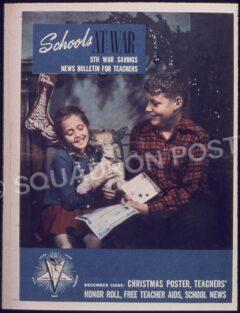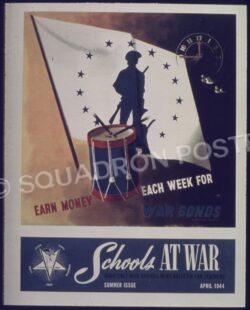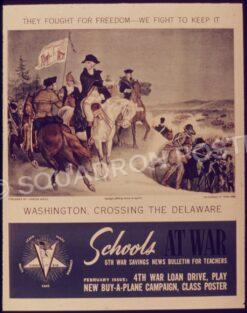TUE, JUN 4 @ 6:15 PM EASTSIDE PONY A HUNTER PARK
WED, JUN 5 @ 6:00 PM WESTWOOD OAKWOOD PONY A OLYMPIA PARK
TUE, JUN 11 @ 8:15 PM ETNA BLUE PONY A OLYMPIA PARK
WED, JUN 12 @ 8:00 PM SQ. HILL PONY A OLYMPIA PARK
FRI, JUN 14 @ 6:15 PM SWISSVALE PONY A LES GETZ MEMORIAL PARK
MON, JUN 17 @ 6:15 PM ETNA GREEN PONY A DOUGHERTY FIELD


What does “auld lang syne” mean?
“Auld lang syne” is the title and key phrase of a 1788 Scottish poem by Robert “Rabbie” Burns, typically sung on New Year’s Eve around the world. The phrase “auld lang syne,” which literally translates to “old long since,” basically means “days gone by” in the Scots language. Or, as Merriam-Webster explains, the “auld lang syne” meaning is “the good old times.”
What is the song “Auld Lang Syne” about?
If the “auld lang syne” meaning has to do with remembering days gone by, the song must reminisce about the good ol’ days, right? Sort of. It’s a bit boozier than that.
The original five-verse version of the poem essentially gets people singing “let’s drink to days gone by,” an appropriate toast for the new year. That’s right: Deemed by music historians to be the most famous “song that nobody knows,” “Auld Lang Syne” is a piece of the long oral tradition of getting drunk and belting out a tune. However, it can also be used as a funeral song, where it’s played at the end of a funeral service or a graduation ceremony.
Where does the term “auld lang syne” come from?
Now that you know the “Auld Lang Syne” meaning, here’s where the term is from: The nostalgic phrase “auld lang syne” appeared in Scottish song as early as 1588, but it was Burns who gave us the version we prefer to butcher every Dec. 31.
When Burns turned in the manuscript of his poem “Auld Lang Syne” in 1788, he was quick to cite the Scottish oral tradition as his muse. “The following song, an old song, of the olden times,” he’s said to have remarked, “has never been in print, nor even in manuscript until I took it down from an old man.”
Burns embellished the old ballad with a few verses of his own, mostly adding lines about drinking, like “we’ll take a cup of kindness yet” and “we’ll take a right good-will draught.” The ballad quickly became a standard for the Scottish New Year celebration of Hogmanay.
How did “Auld Lang Syne” become so popular?
As Scots immigrated around the world, they took the song with them. Eventually, North American English speakers translated Burns’s dialect into the common lyrics we know today, made famous in part by Guy Lombardo and his band, the Royal Canadians. The group performed the song on New Year’s Eve from 1929 until about 1977. It’s this version that plays every year after the ball drops in Times Square. This year, when you refill your glass with a twinkle of nostalgia in your eye, know that you’re doing exactly what Rabbie Burns would have wanted.
Rom-com enthusiasts also know the “Auld Lang Syne” meaning is a topic of conversation in the hit flick When Harry Met Sally, which features a memorable New Year’s Eve scene. Harry, baffled about the song’s meaning, says, “My whole life, I don’t know what this song means. I mean, ‘Should old acquaintance be forgot.’ Does that mean that we should forget old acquaintances? Or does it mean that if we happened to forget them, we should remember them, which is not possible because we already forgot ’em?” Sally replies, “Well, maybe it just means that … we should remember that we forgot them, or something. Anyway, it’s about old friends.”
Jim West sculptor – Point of View
POINT OF VIEW is an iconic piece with timeless relevance that truly embodies my ‘Art as Dialogue’ vision statement.
Both literally and figuratively, there is quite a lot happening in this piece.
POINT OF VIEW memorializes a meeting between two prominent historical figures who fought on opposite sides of the French and Indian War – a worldwide conflict between two superpowers, England and France – and who put their differences aside for the greater good of all.
As I created this sculpture, I intentionally wanted both figures to be viewed as equals.
Their heads are at the same elevation.
They are faced eye-to-eye. Guyasuta sits with his back against the west.
Washington keeps his gaze toward that direction in deference to the westward push by colonists.
They are listening to each other. They are having a civil dialogue and putting their differences aside.
That’s the story. That’s the lesson for us all, then and now.
#guyasuta #georgewashington #frenchandindianwar #pittsburgh #history #bronze #sculpture #publicsculpture #figurativesculpture #art #listentoeachother
THE BABY BOMBERS OF WORLD WAR II

Squadron Posters recently came across an amazing and seldom heard of story of what we are calling “The Bomber Babies of WWII”. We were recently contacted by an elderly parishioner of a church in Pittsburg who reached out to us and shared a rare story that we have never heard of before. School children during WWII sold War Bonds to help support the war effort. This particular school raised more money than any other school and set an incredible record. When the children of the “St Mary of the Mount School” in Pittsburgh began their War Bond drive their target was to raise sufficient funds to purchase one aircraft. By the time they had completed the collection they had raised enough to buy 1 B-17 Flying Fortress, 4 Grasshopper flying ambulances, 7 jeeps, 1 amphibious jeep and 35 ambulances. At the same time, it was also sufficient to fund 5 $3000 hospital units and $2000 of medical equipment.
Incredibly, the children of St Mary of the Mount raised a total of $447,804.64 in their campaign. This may have been more than any other school bond drive in WWII. To mark the purchase of their B-17 bomber, the War Department sent a photo of a B17G embellished with the title of their school. (Sadly, this was almost certainly simply a photo retouched with the title, like so many of the war bond planes at that time).

The pupils however had their christening ceremony nonetheless. Water drawn from the Ohio, Allegheny and Monongahela rivers was poured over a model B-17 airplane in a proxy ceremony. A photo in the Pittsburgh Post Express (19 March 43) shows Father Thomas Quigley accompanied by several pupils of the school (Photo yet to be located). 11-year-old Michael Hickey sold $49,000 of bonds, Raymond Streily sold $44,125 and David Harold added another $35,000. At the ceremony, all three high school juniors were made “Honorary Generals” for their efforts. – We passed this story onto the USAAF Nose Art Research Project and here is the result of their research so far: HERE

We are not sure if any of these school children are still alive today. However we would be very interested in hearing from anyone who knows anything about this time and event in the school’s history.
The American Schools at War program was a program during World War II run by the U.S. Treasury Department, in which schoolchildren set goals to sell stamps and bonds to help the war effort. The program was also administered by the U.S. Office of Education, the Federal government agency that interfaced with the nation’s school systems and its thirty-two million students. The Office, however, allowed the Treasury to work with the schools directly as the main objective of the program was raising money.
Planning for the program began before the December 1941 United States declaration of war on Japan. It started in earnest with the 1942–1943 school year. Students were taught that they could support the war effort in several ways. Their most important contribution was financial. Students bought war stamps and bonds with their spare change or earnings. However, more significantly, they were a sales force of millions selling to their families, neighbors, and communities. By the end of the war, they had raised over $2 billion (equivalent to $29.4 billion in 2020).
Schools at War supplied literature to teachers and posters that encouraged all aspects of the program. Individual schools were incentivized with a special flag to reach 90 percent student participation. School sponsorship of a particular item, such as a jeep or airplane, motivated sales. Tens of thousands of jeeps and hundreds of planes were “bought” under the program.
Here are a few of the postes from this program:



https://www.squadronposters.com/the-bomber-babies-of-wwii/
Click here to download the banner application.
The link below instructs you on how to get DD214 forms if you're interested in purchasing a banner.
Officials representing the city of Pittsburgh, a veterans organization, and two civic groups used a Memorial Day service Sunday to usher in a display of banners — beginning in June — honoring those from Mount Washington who served in the military.
The banners with vets’ photos will hang from street poles along Grandview and Virginia avenues in Mount Washington in years to come between Memorial Day and Veterans Day.
“Being recognized is important, especially for the families of those who have passed,” he said.
Vietnam veterans from Post 5111 performed the gun salute for each name of service members who were killed in action. This was followed by the playing of taps to conclude the ceremony
Back row Connie Graff, Caroline Weithorn,
now a Sister, ? Maybe Connie Northrop, Rose Ann McDermott , Rosemary Quinlin
,
Front row Joy Uram, Fran Halpern, Rose Ann Mascaro and Janie
Cawley
A plan to convert a former Catholic
school on Mt. Washington into a 34-unit loft apartment building is moving
forward.
The four-story building would become
Grandview Lofts, with studio, one- and two-bedroom units for rent. They’ll be
priced at market rate, Jones says, though they haven’t set the price yet.
The building’s ground-level gymnasium would be transformed into
an entryway and lobby, business and fitness centers, a property manager’s
office, tenant and bike storage, mechanical areas, and an ADA tenant apartment.
The three floors of classrooms above would become apartments,
with lounge space and laundry rooms. A new rooftop deck would provide residents
with 360-degree views of Downtown, the Monongahela River, the North Side, and
Mt. Washington. To ensure that the guardrails don’t interrupt the views,
they’ll be fitted with glass panels.
ST MARY OF THE
MOUNT 1967 BASEBALL TEAM
DIOCESAN LEAGUE CHAMPIONS (14-0)
COACH: WILLIE MILLER
PLAYERS:
1. GEORGE “BO” FIGLIOLIA 1967 10. JOE MERRIMAN 1968
2. JACK FREDLAND 1967 11. BILL WATERS 1968
3. TOM O’NEILL 1967 12. GUY
CAPARELLI 1969
4. RICK STAMBROSKY
1967 13. MIKE
GALLAGHER 1969
5. TERRY SCANLON 1967 14. GEORGE GEYER
6. DAN BOLICK 1968 15. FUZZY
ALSTON 1970
7. TOM COGHILL 1968 16. ERNIE FAULDS
1970
8. JIM ERKLE 1968 19. JACK
TEITZ
9. ED WIRTH 1968 BAT BOY: PAUL PALMER

























































































Does anyone remember or have a picture of the old building that stood in the playground of the grade school? I think at some time before it might have been a convent. I (Lorraine Legler) remember going to class there but have no idea of the grade I was in.
ReplyDelete